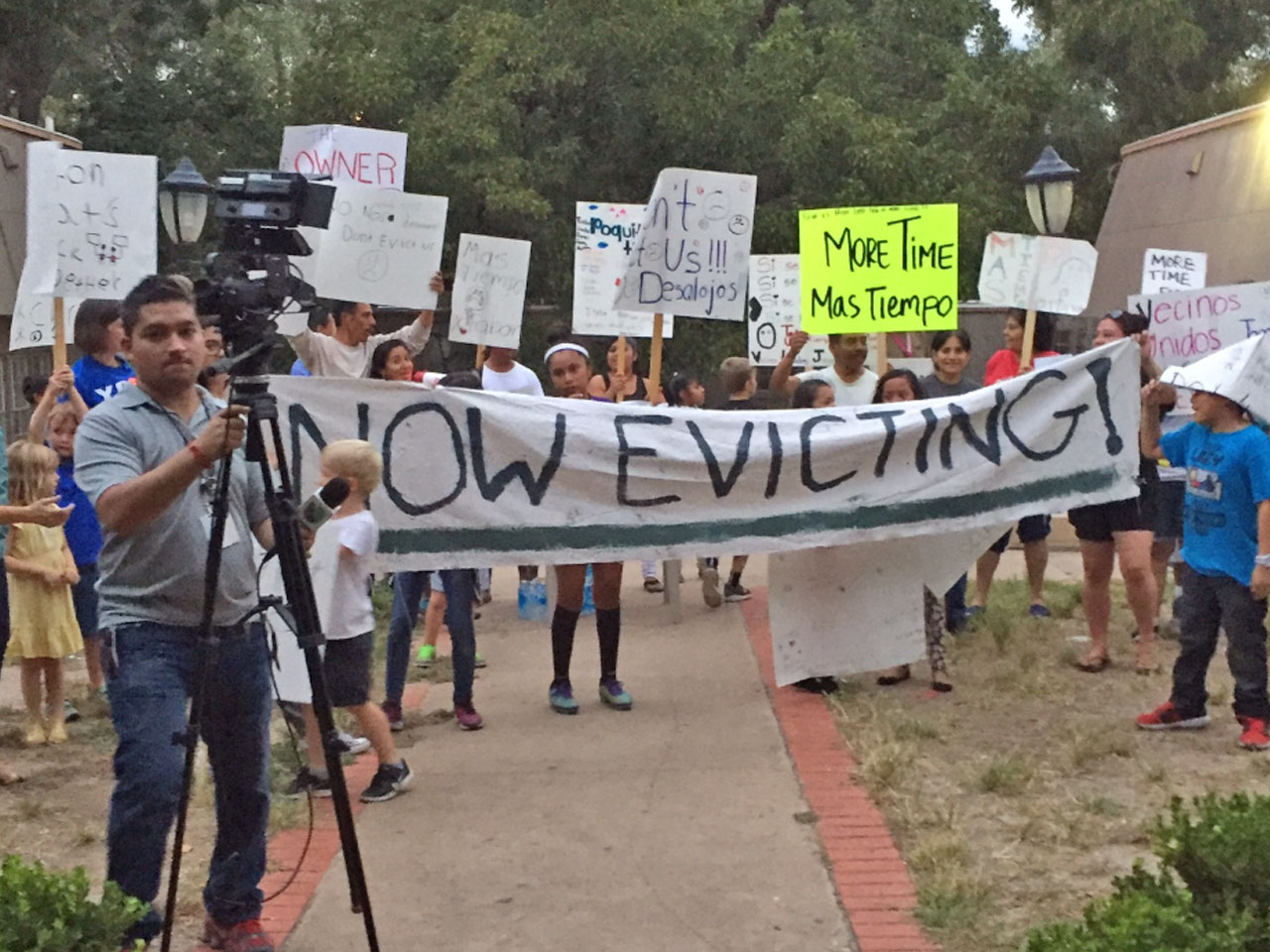The following lessons are drawn from research of efforts to mitigate displacement in gentrifying neighborhoods around the country.
1. Put community voices at the center. Ensure vulnerable residents have a meaningful role in identifying needs, prioritizing the use of resources, implementing strategies, and monitoring progress.
Community voices should be incorporated throughout the development and implementation of displacement mitigation plans and strategies to ensure they are aligned with community needs. [Read more]
Effective community engagement requires strong city efforts to reduce barriers to participation and reach out to directly impacted residents. Active, ongoing community oversight of a city’s displacement mitigation programs brings critical transparency and accountability to the process.
Investing in capacity building of tenants and other vulnerable groups is critical to ensuring that their participation is meaningful and robust. Capacity building is also important to the implementation of many important displacement mitigation strategies, such as resident purchases of mobile home parks and apartment complexes and the creation of community development corporations.
2. Intervene early to acquire permanent control of land. Acquire as much land as possible for permanent use as affordable housing, through mechanisms such as community land trusts, long-term affordability restrictions, and nonprofit and public ownership of land.
As gentrification picks up steam in a neighborhood, it becomes much more difficult to feasibly acquire properties for the preservation and construction of affordable housing. [Read more]
For neighborhoods that are susceptible to gentrification or in the very early stages of gentrifying, it can be hard to envision the rapid rise in property values that will come in later stages of gentrification. But buying land and housing in this early period gives cities, community development organizations, and residents more capacity to mitigate displacement when change does come.
Taking land out of the speculative real estate market protects precious public investments in affordable housing and ensures opportunities for future generations of low-income residents to live in a gentrifying neighborhood. Long-term stewardship of affordable housing investments is best achieved through community and public ownership of affordable housing developments and the land underneath the homes, but long-term deed restrictions also help insure that land remains available for affordable housing for generations.
3. Dedicate substantial levels of city funding to anti-displacement efforts. Secure long-term, dedicated funding streams rather than relying on a city’s general fund.
The implementation of displacement mitigation strategies at a scale large enough to have a systemic impact requires levels of financial commitment equivalent to or greater than city investments in transportation and other important civic endeavors. [Read more]
Producing and preserving affordable housing at scale, like widening freeways or building regional parks, is an undertaking whose costs are often startling to people. For instance, in the absence of oversubscribed federal subsidies, city contributions in the range of $150,000 to $300,000 or more are typically required for each new affordable housing unit built in a gentrifying neighborhood for low-income families, with the exact amount depending on the local housing market, a neighborhood’s stage of gentrification, the income levels of families served, and the type of housing product. Programs that serve the most vulnerable residents of a community require the greatest levels of investment.
4. Anticipate and include strategies for addressing displacement in public revitalization initiatives and major infrastructure projects. In some neighborhoods, the shift from the need for revitalization to the need for anti-displacement measures can occur quickly.
When a city institutes revitalization programs or otherwise makes significant investments in a community, such as new transit infrastructure or incentives for higher-end housing, it should anticipate displacement and incorporate affordable preservation and other displacement mitigation strategies into those plans up front, rather than reacting to this need later on when it may be too late and too expensive to respond.
5. Match anti-displacement strategies to neighborhood conditions and needs. Strategies to combat displacement should be grounded in community planning efforts with measurable goals and timelines for implementation.
Cities should develop a clear understanding of which neighborhoods are impacted by gentrification, the levels of gentrification and displacement occurring, and who is being impacted. Having a community- driven, neighborhood-level plan that includes specific goals and timelines, along with a community oversight mechanism, allows for greater accountability and oversight over a city’s progress towards addressing displacement.
6. Commit for the long haul with a diverse set of tools. Develop realistic expectations of what constitutes success and the time to achieve displacement-mitigation goals.
Even with large-scale, concentrated investments to mitigate residential displacement in a gentrifying neighborhood, it is next to impossible to entirely eliminate displacement in the face of market pressures. [Read more]
But even though residential displacement that arises as a consequence of gentrification cannot be entirely eliminated, displacement can be meaningfully mitigated with a multipronged, sustained effort pursued over many years by local stakeholders, as shown in many communities across the United States. Progress on mitigating displacement of vulnerable populations requires long-term, ongoing support and engagement from elected officials, civic leaders, and residents, including those from impacted communities.
Reducing displacement also requires a willingness to mix and match a variety of strategies and to proceed simultaneously on a variety of fronts. Voters and elected officials have to be willing to support new and unfamiliar approaches, as well as to drastically scale up those tools that are already achieving results.
7. Create local capacity for preserving affordable housing and identifying the biggest preservation risks.
A coordinated network of high capacity preservation groups, strong community development organizations, city staff, and other stakeholders is essential to preserving existing affordable housing and combatting displacement in gentrifying neighborhoods. A network is needed to identify preservation risks, as well as coordinate and implement responses. A critical strategy for identifying preservation priorities is creating and actively updating a database of at-risk properties that incorporates detailed information about multifamily developments’ expiring subsidies, building conditions, and other indicators of vulnerability.
